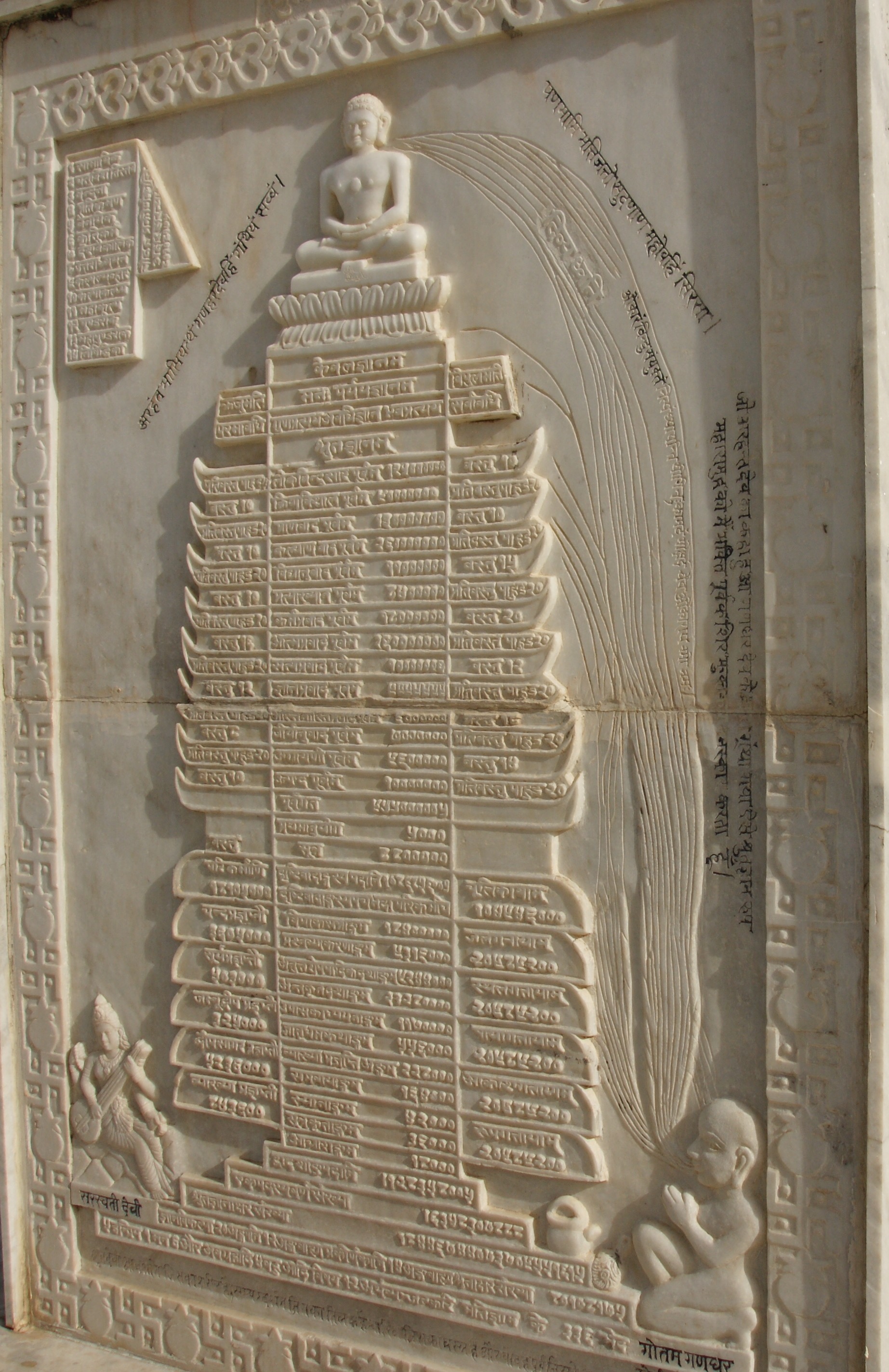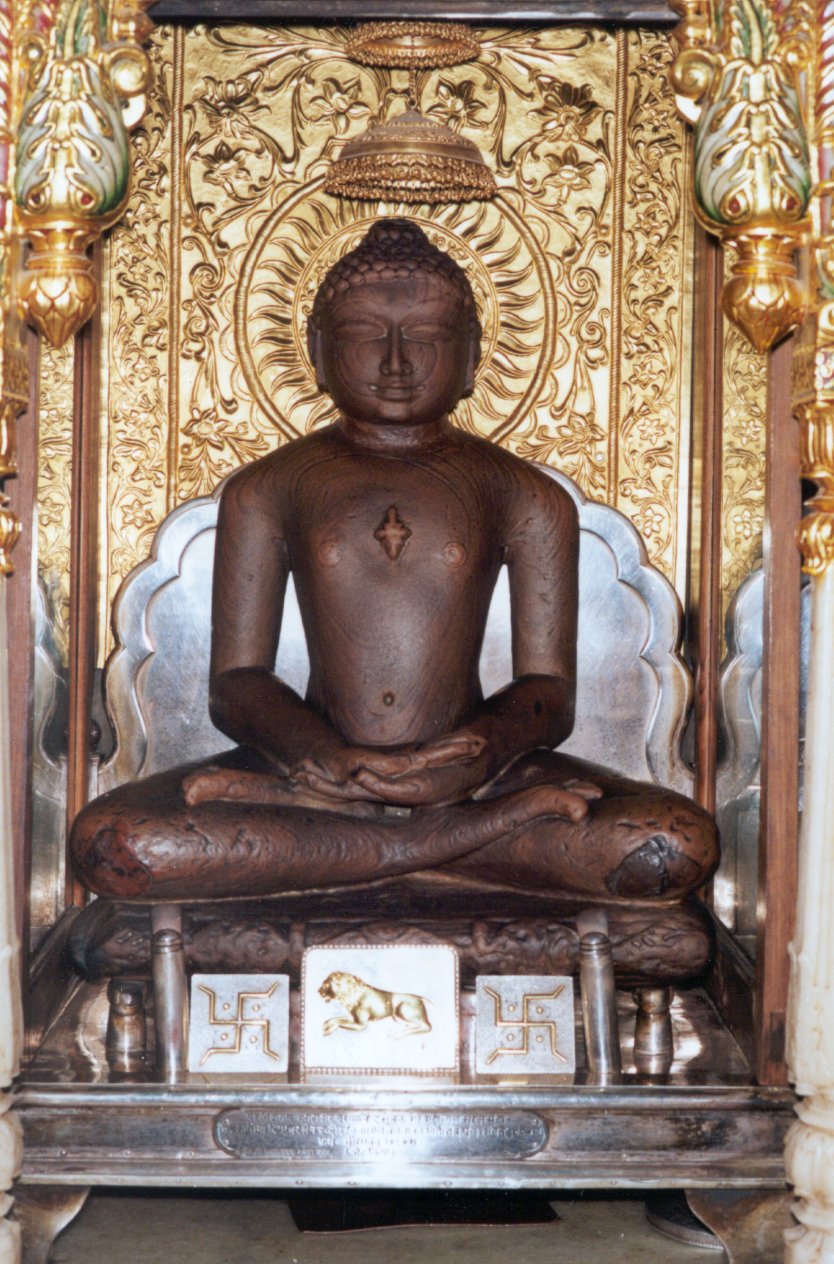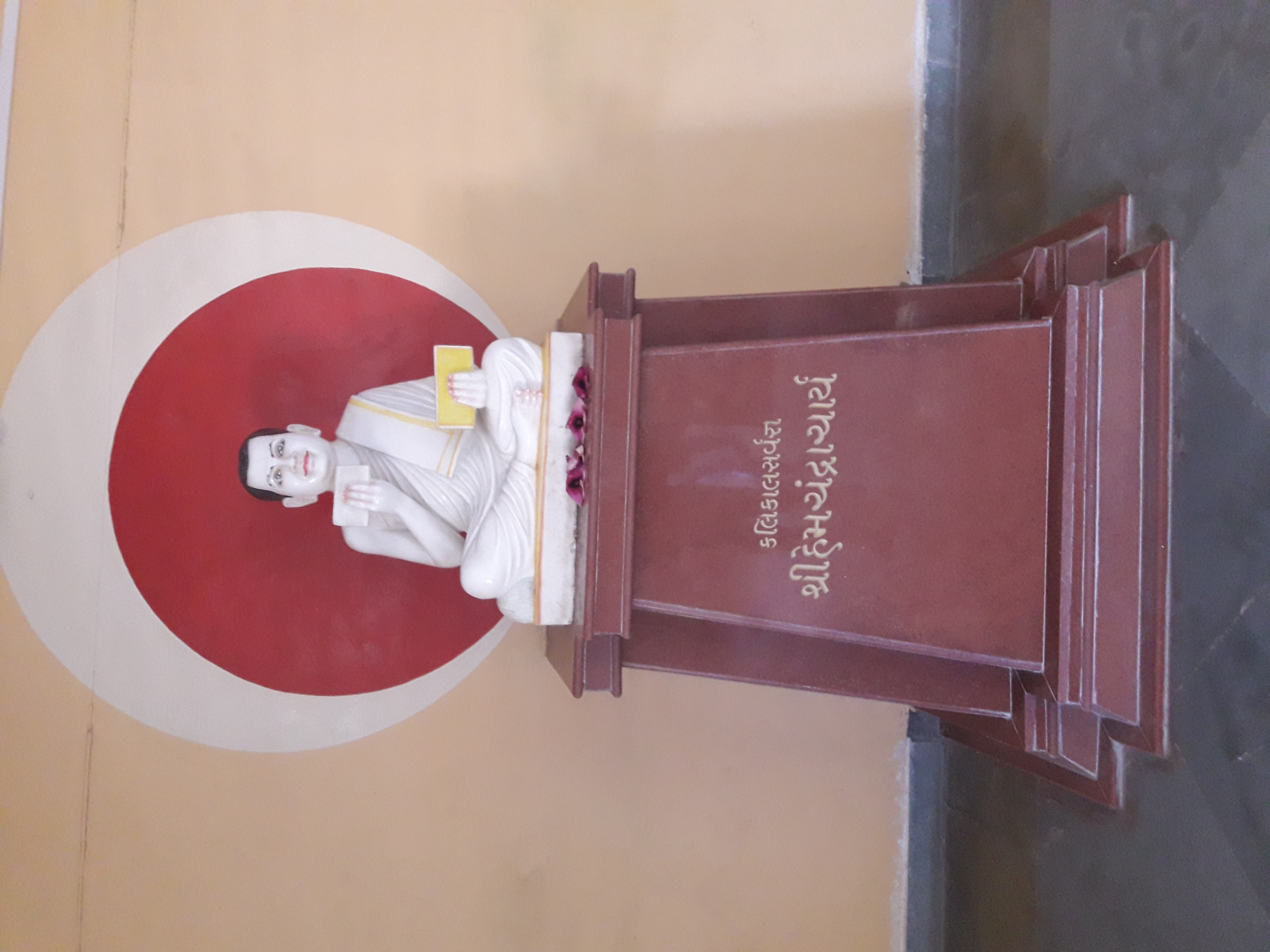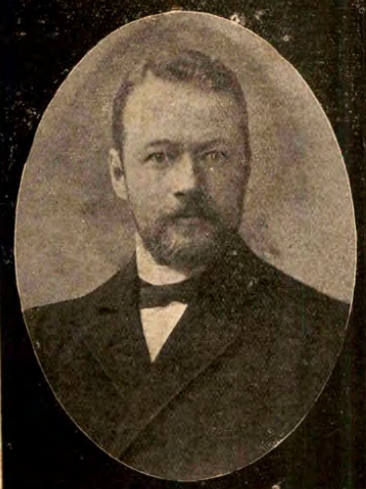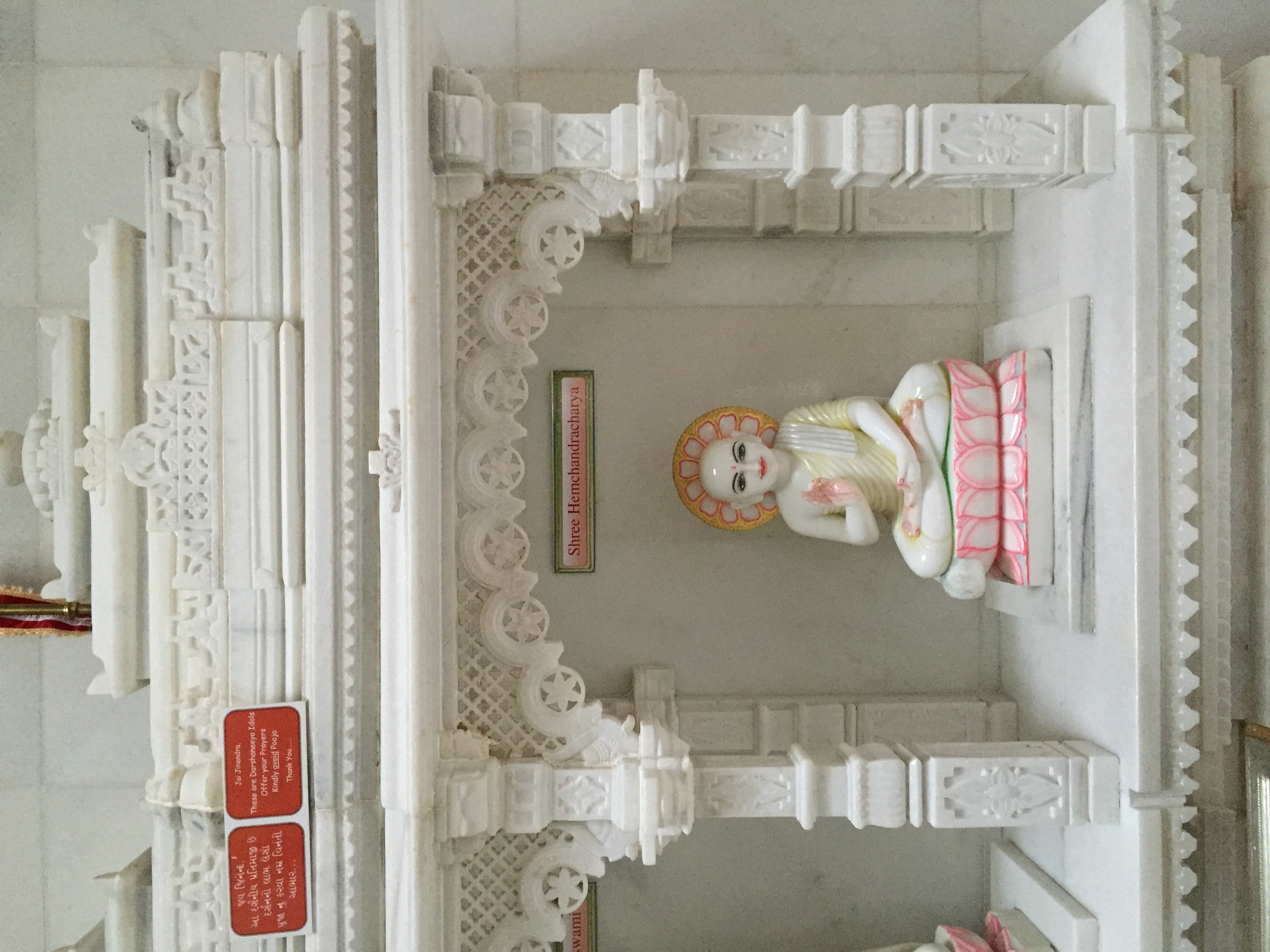|
Purvas
The Fourteen Purvas (meaning ancient or prior knowledge) are a large body of Jain scriptures that was preached by all Tirthankaras (omniscient teachers) of Jainism encompassing the entire gamut of knowledge available in this universe. The persons having the knowledge of purvas were given an exalted status of ''Shrutakevali'' or "scripturally omniscient persons". Both the Jain traditions, Śvetāmbara and Digambara hold that all the fourteen purvas have been lost.Jaini, Padmanabh (1998). ''The Jaina Path of Purification''. New Delhi: Motilal Banarsidass. . According to tradition, the Purvas were part of canonical literature and deposited in the third section of Drstivada (the twelfth and last canon). Knowledge of Purvas became fairly vulnerable after Mahavira's nirvana (liberation) and on account of effects of famine, such that, eventually only one person— Bhadrabahu Svami had a command over it. In accordance with the prophecy of Mahavira, the knowledge of Purvas died within 1,0 ... [...More Info...] [...Related Items...] OR: [Wikipedia] [Google] [Baidu] [Amazon] |
Jain Agamas
Jain literature () refers to the literature of the Jain religion. It is a vast and ancient literary tradition, which was initially transmitted orally. The oldest surviving material is contained in the canonical ''Jain Agamas'', which are written in Ardhamagadhi, a Prakrit ( Middle-Indo Aryan) language. Various commentaries were written on these canonical texts by later Jain monks. Later works were also written in other languages, like Sanskrit and Maharashtri Prakrit. Jain literature is primarily divided between the canons of the ''Digambara'' and '' Śvētāmbara'' orders. These two main sects of Jainism do not always agree on which texts should be considered authoritative. More recent Jain literature has also been written in other languages, like Marathi, Tamil, Rajasthani, Dhundari, Marwari, Hindi, Gujarati, Kannada, Malayalam and more recently in English. Beliefs Jains believe their religion is eternal, and the teachings of the first tīrthaṅkara, Ṛṣ ... [...More Info...] [...Related Items...] OR: [Wikipedia] [Google] [Baidu] [Amazon] |
Jain Texts
Jain literature () refers to the literature of the Jainism, Jain religion. It is a vast and ancient literary tradition, which was initially transmitted orally. The oldest surviving material is contained in the canonical ''Jain Agamas'', which are written in Ardhamagadhi Prakrit, Ardhamagadhi, a Prakrit (Middle Indo-Aryan languages, Middle-Indo Aryan) language. Various commentaries were written on these canonical texts by later Jain monasticism, Jain monks. Later works were also written in other languages, like Sanskrit and Maharashtri Prakrit. Jain literature is primarily divided between the canons of the ''Digambara'' and ''Śvētāmbara'' orders. These two main sects of Jainism do not always agree on which texts should be considered authoritative. More recent Jain literature has also been written in other languages, like Marathi language, Marathi, Tamil language, Tamil, Rajasthani language, Rajasthani, Dhundari language, Dhundari, Marwari language, Marwari, Hindi language, ... [...More Info...] [...Related Items...] OR: [Wikipedia] [Google] [Baidu] [Amazon] |
Drstivada
The Dṛṣṭivāda or Drishtivaad ("Disputation about views") is a lost text in the Jain religion. It is the last of the 12 Jain āgamas as per Śvetámbara tradition, said to be promulgated by Māhavīra himself and composed by Ganadhara Sudharmaswami. The text is traditionally said to contain the entire knowledge of the Fourteen Purvas. However, its contents have been referred and explained in Nandi and ''Samavāyānga Sūtra''. Subdivisions The Dristivāda was divided into five parts, according to the ''Sarvārthasiddhi'' commentary from the Digambara tradition. #Parikarma, containing Jaina calculatory science #Sūtra, containing discussion about creeds and narratives #Prathamānuyoga (Pūrvanayoga), containing Puranic narratives, religious biographies, and illustrative tales # Pūrvagata, with fourteen subdivisions, containing discussions about Jaina doctrines and principles and may have been composed before the time of Mahavira #Cūlikā, containing the Purvas, kn ... [...More Info...] [...Related Items...] OR: [Wikipedia] [Google] [Baidu] [Amazon] |
Digambara
''Digambara'' (; "sky-clad") is one of the two major Jain schools and branches, schools of Jainism, the other being ''Śvetāmbara'' (white-clad). The Sanskrit word ''Digambara'' means "sky-clad", referring to their traditional monastic practice of neither possessing nor wearing any clothes. Nakedness was the ideal practice of lord Mahavira and his immediate followers. Mahavira emphasized the importance of nakedness for monks. It symbolizes complete detachment and is an ideal form of conduct. Mahavira believed that renouncing clothes made the body immune to external influences like heat and cold, increasing resilience. Without clothes, a monk would avoid the distractions of acquiring, maintaining, and washing garments, allowing him to focus on spiritual growth and self-discipline. Digambara and Śvetāmbara traditions have had historical differences ranging from their dress code, their temples and iconography, attitude towards female monastics, their legends, and the texts the ... [...More Info...] [...Related Items...] OR: [Wikipedia] [Google] [Baidu] [Amazon] |
Anekantavada
(, "many-sidedness") is the Jain doctrine about metaphysical truths that emerged in ancient India. It states that the ultimate truth and reality is complex and has multiple aspects and viewpoints. According to Jainism, no single, specific statement can describe the nature of existence and the absolute truth. This knowledge ('' Kevala Jnana''), it adds, is comprehended only by the Arihants. Other beings and their statements about absolute truth are incomplete, and at best a partial truth. All knowledge claims, according to the ''anekāntavāda'' doctrine must be qualified in many ways, including being affirmed and denied. Anekāntavāda is a fundamental doctrine of Jainism. The origins of ''anekāntavāda '' can be traced back to the teachings of Mahāvīra (599–527 BCE), the 24th Jain , and the predecessor Tirthankars. The dialectical concepts of ''syādvāda'' "conditioned viewpoints" and ''nayavāda'' "partial viewpoints" were expounded and illustrated from ''anekānta ... [...More Info...] [...Related Items...] OR: [Wikipedia] [Google] [Baidu] [Amazon] |
Sthaviravali
The Parishishtaparvan () also known as the Sthaviravalicharitra () is a 12th-century Sanskrit mahakavya by Hemachandra which details the histories of the earliest Jain teachers. The poem comprises 3,460 verse couplets divided into 13 cantos of unequal length and is also notable for providing information on the political history of ancient India. The ''Trishashtishalakapurushacharitra'' (; ''The Lives of the Sixty-three Illustrious People''), an epic Sanskrit poem on the key figures in Jainism, was composed by Hemachandra at the request of the Chaulukya king, Kumarapala. The Sthaviravalicharitra (''The Lives of the Jain Elders'') is considered a self-contained sequel to this work and is consequently referred to as the Parishishtaparvan or ''The Appendix''. The period largely covered in the poem corresponds to and follows the growth of the kingdom of Magadha and the establishment of the Maurya Empire. According to Hemachandra, the sequence of rulers in the times of the Jains discus ... [...More Info...] [...Related Items...] OR: [Wikipedia] [Google] [Baidu] [Amazon] |
Acharya Hemachandra
Hemacandra was a 12th century () Śvetāmbara Jaina ācārya, scholar, poet, mathematician, philosopher, yogi, grammarian, law theorist, historian, lexicographer, rhetorician, logician, and prosodist. Noted as a prodigy by his contemporaries, he gained the title ''kalikālasarvajña'', "the knower of all knowledge in his times" and is also regarded as father of the Gujarati language. Born as Caṅgadeva, he was ordained in the Śvetāmbara school of Jainism in 1110 and took the name Somacandra. In 1125 he became an adviser to King Kumārapāla and wrote ''Arhannīti'', a work on politics from Jaina perspective. He also produced ''Triśaṣṭi-śalākā-puruṣacarita'' (“Deeds of the 63 Illustrious Men”), a Sanskrit epic poem on the history of important figures of Jainism. Later when he was consecrated as ācārya, his name was changed to Hemacandra. Early life Hemacandra was born in Dhandhuka, in present-day Gujarat, on Kartika Sud Purnima (the full moon day of Kār ... [...More Info...] [...Related Items...] OR: [Wikipedia] [Google] [Baidu] [Amazon] |
Hermann Jacobi
Hermann Georg Jacobi (11 February 1850 – 19 October 1937) was an eminent German Indologist. Education Jacobi was born in Köln (Cologne) on 11 February 1850. He was educated in the gymnasium of Cologne and then went to the University of Berlin, where initially he studied mathematics, but later, probably under the influence of Albrecht Weber, switched to Sanskrit and comparative linguistics, which he studied under Weber and Johann Gildemeister. He obtained his doctorate from the University of Bonn. The subject of his thesis, written in 1872, was the origin of the term "hora" in Indian astrology. Jacobi was able to visit London for a year, 1872–1873, where he examined the Indian manuscripts available there. The next year, with Georg Buehler, he visited Rajasthan, India, where manuscripts were being collected. At Jaisalmer Library, he came across Jain manuscripts, which were of abiding interest to him for the rest of his life. He later edited and translated many of t ... [...More Info...] [...Related Items...] OR: [Wikipedia] [Google] [Baidu] [Amazon] |
Hemachandra
Hemacandra was a 12th century () Śvetāmbara Jaina acharya, ācārya, scholar, poet, mathematician, philosopher, yogi, wikt:grammarian, grammarian, Law, law theorist, historian, Lexicography, lexicographer, rhetorician, logician, and Prosody (linguistics), prosodist. Noted as a prodigy by his contemporaries, he gained the title ''kalikālasarvajña'', "the knower of all knowledge in his times" and is also regarded as father of the Gujarati language. Born as Caṅgadeva, he was ordained in the Śvētāmbara, Śvetāmbara school of Jainism in 1110 and took the name Somacandra. In 1125 he became an adviser to King Kumārapāla and wrote ''Arhannīti'', a work on politics from Jaina perspective. He also produced ''Triśaṣṭi-śalākā-puruṣacarita'' (“Deeds of the 63 Illustrious Men”), a Sanskrit epic poem on the history of important figures of Jainism. Later when he was consecrated as ācārya, his name was changed to Hemacandra. Early life Hemacandra was born in Dhand ... [...More Info...] [...Related Items...] OR: [Wikipedia] [Google] [Baidu] [Amazon] |
Jambuswami
Jambuswami (543-449 BCE) was the spiritual successor of Sudharmaswami in Jain religious order reorganised by Mahavira. He remained the head for 39 or 44 years, after which he is believed to have gained '' Kevala Jnana'' (omniscience). He is believed to be the third and last '' kevali'' (omniscient being) after Mahavira in Jain tradition. He is believed to have attained ''moksha'' (liberation) at the age of 84 in Mathura. Jambu was succeeded by Prabhava (443-338 BCE), who was converted from a bandit by him. Prabhava was succeeded by Shayyambhava (377-315 BCE). Shayyambhava composed ''Dasavaikalika sutra'' after studying the fourteen ''purvas'' (pre-canonical texts). He was initiated as a Jain monk. He initiated his son as a monk at the age of eight and taught him sacred knowledge in 10 lectures in six months after which the latter died. Shayyambhava was succeeded by Yasobhadra (351-235 BCE), who was succeeded by his two disciples, Sambhutavijaya (347-257 BCE) and Bhadrabahu ( ... [...More Info...] [...Related Items...] OR: [Wikipedia] [Google] [Baidu] [Amazon] |
Sudharma Swami
Sudharmaswami ( or Sudharman; 607 BC – 507 BC) was the fifth ganadhara of Mahavira. All the current Jainism, Jain acharyas and monks follow his rule. Life Sudharmaswami was the spiritual successor of Indrabhuti Gautama in religious order reorganised by Mahavira. He is traditionally dated from 607 to 507 BC. In the Jain tradition he is believed to have obtained omniscience after 12 years in 515 BC. He is believed to have attained moksha (Jainism), nirvana in 507 BC at the age of 100. The leadership of religious order was then transferred to Jambuswami who served for 44 years and was the last Ganadhara who survived after the death of Mahavira. For Jains, their scriptures represent the literal words of Mahavira and the other tirthankaras only to the extent that the Agama (Hinduism), agama texts are a series of fixed truths without a beginning or an end, and a tradition without any origin, human or divine, which in this world age has been channelled through Sudharmasvāmī. See ... [...More Info...] [...Related Items...] OR: [Wikipedia] [Google] [Baidu] [Amazon] |
